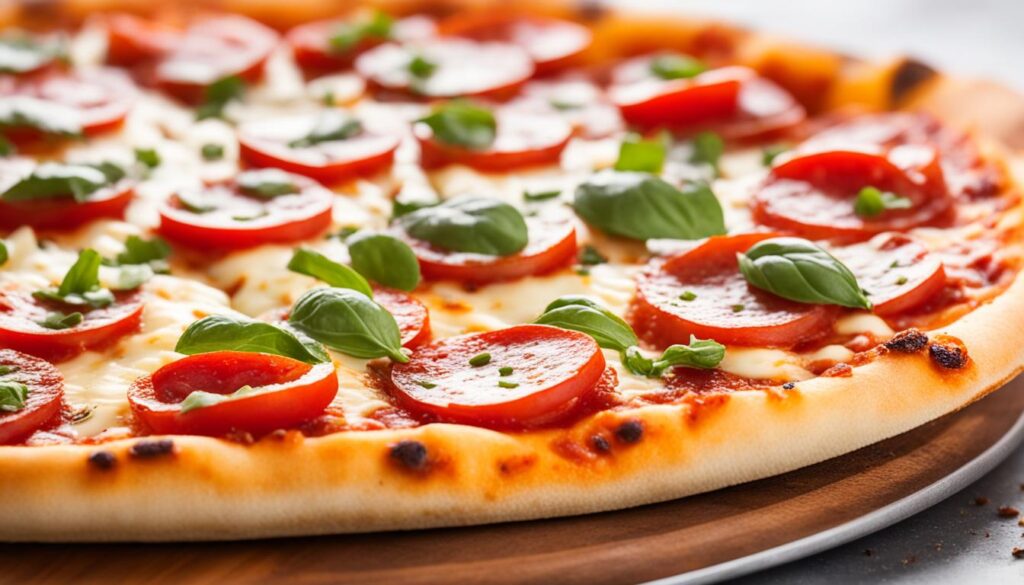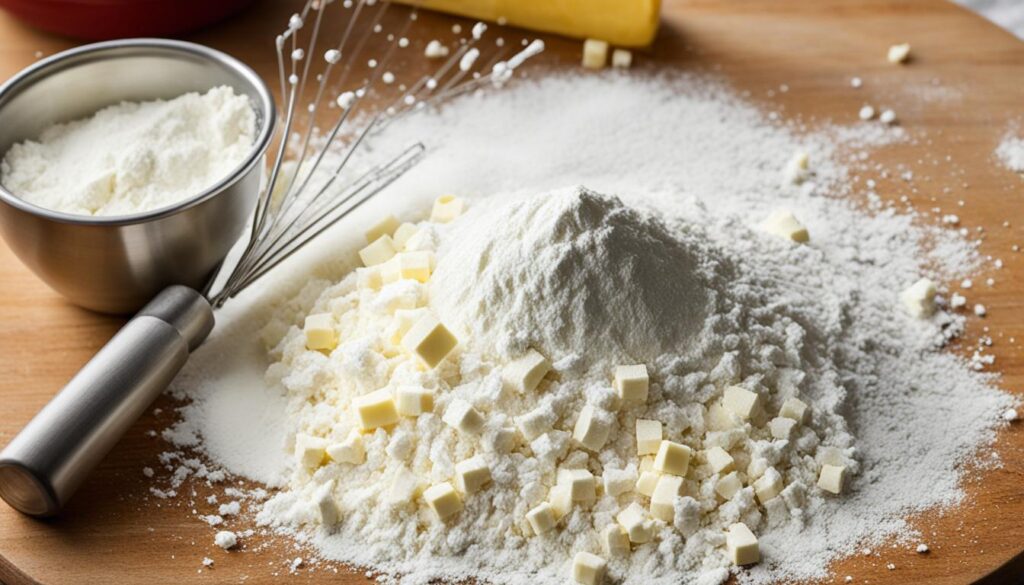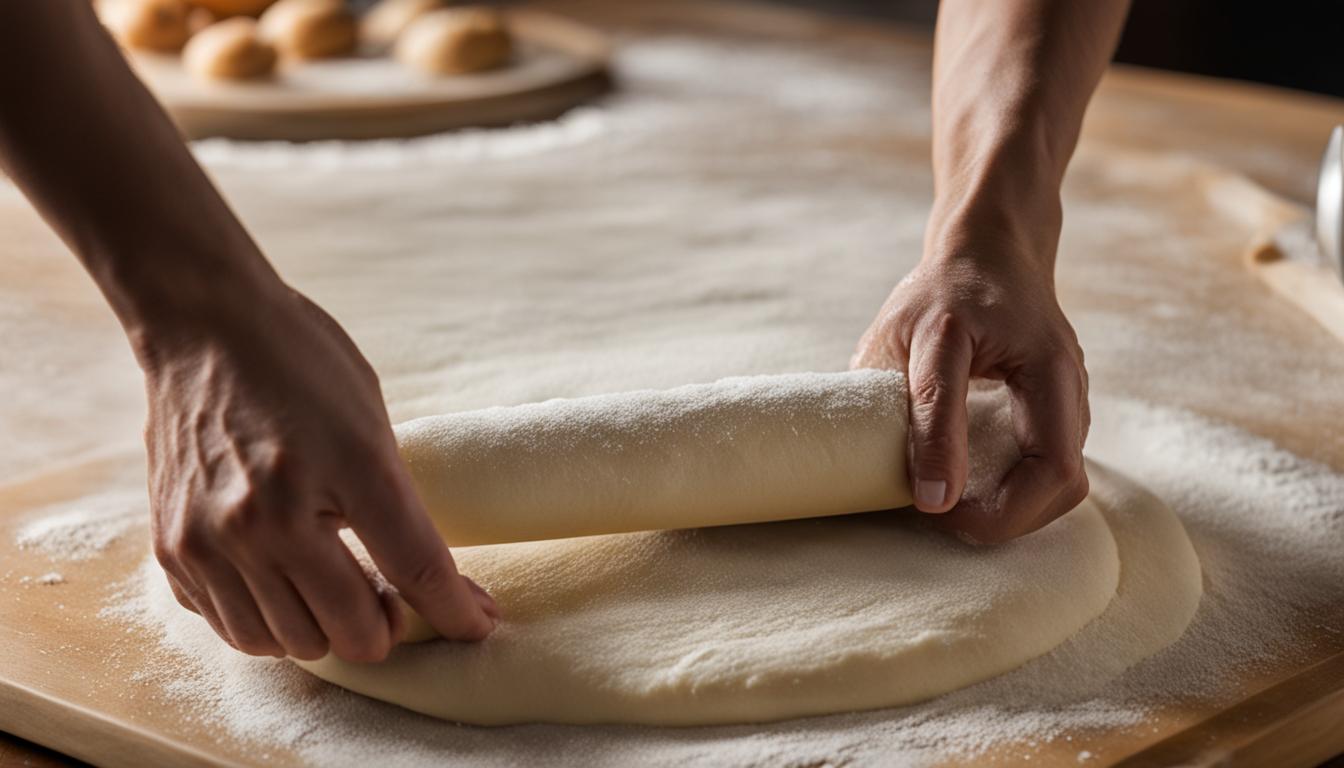When it comes to making homemade pizza, the dough is the foundation of a delicious pie. But with so many dough recipes out there, how do you know which one to choose? Fortunately, we’ve done the research for you and narrowed it down to three essential pizza doughs that will guarantee perfect pies every time. Are you ready to uncover the secrets of Neapolitan, New York-style, and Sicilian-style doughs?
Pizza enthusiasts worldwide have debated the merits of different crusts for generations. Is it the thin and crispy texture of Neapolitan that reigns supreme? Or does the foldable, chewy crust of New York-style steal the show? And let’s not forget about the thick and flavorful Sicilian-style crust – is it truly the champion of all pizza crusts?
In this article, we’ll guide you through the world of pizza dough, exploring the unique characteristics of each style and providing you with foolproof recipes to recreate these iconic crusts at home. Prepare to take your pizza-making skills to the next level as we dive deep into The Pizza Lab!
Key Takeaways:
- Discover the characteristics and recipes for Neapolitan, New York-style, and Sicilian-style pizza doughs.
- Explore the techniques and ingredients that make each dough unique.
- Learn how to achieve the perfect texture and flavor for your homemade pies.
- Master the art of pizza-making with these essential dough recipes in your repertoire.
- Experiment with variations and tailor your crust to your personal preference.
Neapolitan Pizza Dough: The Simplicity of Perfection
Neapolitan pizza dough is the epitome of simplicity. Made with just flour, water, salt, and yeast, this lean dough allows the natural flavors of the ingredients to shine through. The true magic of Neapolitan pizza lies in its long fermentation period, which not only develops the dough’s flavor but also enhances gluten formation and creates a dramatic rise.
In its traditional form, Neapolitan pizza is cooked in wood-fired ovens at high temperatures. This method results in a thin, crisp crust with a soft, poofy interior. The contrast of textures is what makes Neapolitan pizza so beloved by pizza enthusiasts around the world.
To achieve similar results at home, you can use high-protein flour, such as Italian “OO” flour, which gives the dough its characteristic chewiness and strength. Additionally, opting for a no-knead method with a long cold fermentation allows the dough to develop complex flavors and a light, airy texture.
Neapolitan Pizza Dough Recipe
Here’s a simple recipe for Neapolitan pizza dough:
| Ingredients | Quantity |
|---|---|
| High-protein flour (Italian “OO” flour) | 500 grams |
| Water | 325 milliliters |
| Salt | 10 grams |
| Yeast | 1 gram |
Instructions:
- In a large bowl, combine the flour and salt.
- In a separate container, dissolve the yeast in the water.
- Add the yeast mixture to the flour mixture and stir until a shaggy dough forms.
- Cover the bowl with plastic wrap and let the dough ferment in the refrigerator for at least 24 hours.
- After the fermentation period, divide the dough into individual portions and shape them into balls.
- Allow the dough balls to rest at room temperature for about 2 hours before shaping and baking your pizzas.
With this Neapolitan pizza dough recipe, you’ll be able to recreate the simplicity and perfection of a classic Neapolitan pizza right in your own kitchen.
New York-Style Pizza Dough: The Perfect Foldable Slice
When it comes to New York-style pizza, it’s all about the perfect foldable slice. This iconic pizza style is known for its thin crust, sturdy yet pliable texture, and delicious blend of flavors. To achieve that authentic New York taste, we need to pay attention to the dough.
The New York-style pizza dough recipe involves a few key ingredients and techniques that make all the difference. One of the secrets to its unique texture and flavor is the addition of oil and sugar to the dough. These ingredients create tenderness and help in achieving the desired browning during the longer baking time.
For the best results, it is recommended to use bread flour when making New York-style pizza dough. Bread flour has a higher protein content than all-purpose flour, which contributes to a chewier and sturdier crust. It gives the dough the elasticity and strength needed to support the toppings without becoming too dense.
The process of making New York-style pizza dough can be done using a stand mixer or a food processor. Both methods are effective in achieving the desired consistency. However, if you prefer a more hands-on approach, kneading the dough by hand can also yield excellent results.
Now, let’s take a look at the recipe for New York-style pizza dough:
New York-Style Pizza Dough Recipe
- 3 ½ cups bread flour
- 2 teaspoons salt
- 1 teaspoon sugar
- 2 ¼ teaspoons instant yeast
- 1 ¼ cups warm water (around 110°F)
- 2 tablespoons olive oil
1. In a large bowl, combine the bread flour, salt, sugar, and instant yeast.
2. Pour in the warm water and olive oil.
3. Stir until a shaggy dough forms.
4. Transfer the dough to a lightly floured surface and knead for about 5 minutes until the dough becomes smooth and elastic.
5. Place the dough in a lightly oiled bowl and cover it with a clean kitchen towel.
6. Let the dough rise in a warm place for about 1 to 2 hours, or until doubled in size.
7. Once the dough has risen, divide it into two equal portions.
8. Shape each portion into a smooth ball and let them rest, covered, for about 30 minutes to allow the gluten to relax.
Now that our New York-style pizza dough is ready, it’s time to roll it out and create those delicious, thin-crust pizzas. Remember, the key to achieving that perfect foldable slice is to roll out the dough thinly and bake it at the right temperature. Gas-fired or coal-fired ovens are ideal for this style of pizza, but a regular oven will work just fine.

“The ideal texture of a New York-style pizza crust is a thin layer of soft, slightly chewy cooked dough topped with a slick and slightly doughy crust at the interface with the sauce and cheese.”
Once you have your New York-style pizza dough ready, top it with your favorite sauce, cheese, and toppings. Bake it in a preheated oven at 475°F for about 12-15 minutes or until the crust is golden brown and the cheese is bubbly.
Now you can enjoy a slice of iconic New York-style pizza in the comfort of your own home.
Sicilian-Style Pizza Dough: Hearty and Flavorful
Sicilian-style pizza, also known as Grandma-style or sfincione, is a beloved specialty originating from Sicily, Italy. It is characterized by its thick and substantial crust, which is perfect for those who prefer a heartier pizza experience. The Sicilian-style pizza dough recipe produces a square pie with a signature thick and crisp crust that is sure to satisfy your cravings.
The key to achieving the distinctive texture and flavor of Sicilian-style pizza lies in the baking process. The dough is prepared using a variant of New York-style dough, which typically includes high-gluten flour, water, yeast, salt, and sometimes a touch of olive oil for added richness.
Once the dough is ready, it is evenly spread and pressed into a well-oiled square pan. The pan is generously coated with olive oil, which fries the bottom of the dough, creating a golden, ultra-crisp crust that is a hallmark of Sicilian-style pizza. The dough is then topped with a thick layer of garlic-heavy tomato sauce and melted mozzarella cheese that complements the crust perfectly.
The result is a moderately chewy and pliant crust with a distinct sweetness and fried crispness on the bottom. The end crust is well-browned with bits of crisp aged cheese, creating a delightful contrast in textures. Between the bread and toppings, there is a thin layer of slightly doughy crumb that adds depth of flavor and a satisfying mouthfeel.
The Sicilian-style pizza dough recipe is versatile and allows for creative variations in terms of toppings. You can experiment with different combinations of vegetables, meats, and cheeses to customize your square pie to your liking. Whether you prefer a classic Sicilian-style Margherita pizza or a loaded version with a diverse array of toppings, the thick and crisp crust will provide a sturdy base for all the flavors.
Next, let’s take a closer look at the basic ingredients and steps involved in preparing Sicilian-style pizza dough.
The Butter Lab’s Pie Dough: Understanding the Basics
Making pie dough is a combination of five basic ingredients: butter, flour, sugar, salt, and water. These simple yet essential components come together to create a flaky, tender, and flavorful crust that is the foundation of any delicious pie.
Whether you’re a seasoned baker or a novice in the kitchen, understanding the fundamentals of pie dough is key to achieving perfect results every time. While there are various methods and techniques for making pie dough, it all starts with mastering the basics.
The Butter Lab, renowned for their expertise in all things buttery and baked, has shared their tried-and-true pie dough recipe. Let’s dive into the details:
- Ingredients:
- 1 ½ cups all-purpose flour
- ½ teaspoon salt
- 1 tablespoon sugar
- ½ cup cold unsalted butter, cut into small pieces
- 4-6 tablespoons ice water
To begin, gather all the ingredients and ensure that your butter is cold. Cold butter is crucial for achieving a flaky texture in the dough.
Note: The image below depicts the key ingredients for The Butter Lab’s pie dough recipe:

“The Butter Lab’s pie dough incorporates cold unsalted butter, all-purpose flour, sugar, salt, and liquid to create a dough that is flaky, tender, and flavorful.”
Next, in a large bowl, combine the flour, salt, and sugar. Add the cold butter pieces to the bowl.
Using a pastry cutter or your fingertips, cut the butter into the flour mixture until it resembles coarse crumbs. The small butter pieces will create pockets of fat within the dough, resulting in a tender and flaky crust.
Gradually add the ice water, 1 tablespoon at a time, and mix the dough gently with a fork or your hands. The goal is to add just enough water for the dough to hold together when squeezed. Be careful not to overmix, as this can lead to a tough crust.
Once the dough comes together, shape it into a disk and wrap it tightly in plastic wrap. Refrigerate the dough for at least 1 hour, or overnight if possible. Chilling the dough allows the gluten to relax and the flavors to meld, resulting in a more manageable and flavorful dough.
Table:
| Ingredients | Quantity |
|---|---|
| All-Purpose Flour | 1 ½ cups |
| Salt | ½ teaspoon |
| Sugar | 1 tablespoon |
| Cold Unsalted Butter | ½ cup |
| Ice Water | 4-6 tablespoons |
To summarize:
The Butter Lab’s pie dough recipe combines cold unsalted butter, all-purpose flour, sugar, salt, and liquid to create a dough that is flaky, tender, and flavorful. The method involves cutting the butter into the flour mixture and gradually adding the liquid until the dough holds together when squeezed. Once shaped into disks, the dough is chilled to enhance its texture and taste.
Now that you understand the basics of pie dough, you’re ready to roll out and use this versatile pastry in various pie recipes. Stay tuned for more tips and tricks to ensure your pie dough success in the next section!
Tips and Tricks for Pie Dough Success
Achieving pie dough success requires attention to detail and judgment. As we delve into the world of pie dough, it’s essential to understand the visual and tactile benchmarks at each stage of the dough-making process. These benchmarks serve as guides for creating a flavorful and textured crust that will leave your taste buds craving more.
“The key to perfect pie dough lies in the balance of ingredients and the precise execution of techniques.”
Ingredient Variations
While there are slight variations in ingredient quantities across different pie dough recipes, the essential ratios of butter to flour are generally consistent. This balance ensures the right amount of fat to create a tender and flaky crust. However, other ingredients, like sugar, salt, and water, may vary depending on the desired outcome.
To create a dough that holds together without being overly moist or greasy, consider the following ingredient variations:
- Baking Fat: Opt for European butter, known for its high fat content, to achieve maximum flakiness and enhance the overall flavor of your pie crust.
- Flour Selection: Choose a low-protein flour, such as pastry flour, to minimize gluten formation. This results in a more tender and delicate crust.
- Adding Tang: For an extra layer of flavor, add a splash of apple cider vinegar to the dough. The acidity complements sweet fillings and adds a subtle tangy note.
Visual and Tactile Benchmarks
As you work with pie dough, observing and feeling the dough at each stage will guide you towards success. Pay attention to the following visual and tactile benchmarks:
| Milestone | Visual Benchmark | Tactile Benchmark |
|---|---|---|
| Dough Formation | Consistent and uniform distribution of ingredients | Hold together when lightly squeezed |
| Rolling and Shaping | Smooth and cohesive surface | Tender and pliable without excessive tearing |
| Baking | Golden brown color | Crisp and flaky texture |
Remember, practice makes perfect. With time and experience, you’ll develop a keen eye and feel for when your dough has reached the ideal consistency.
Now that you understand the importance of visual and tactile benchmarks and have explored ingredient variations, you’re equipped with the knowledge to take your pie dough to the next level. These tips and tricks will enhance the quality of your crust, ensuring it becomes the star attraction of your homemade pies.
Conclusion
Understanding and mastering the three essential pizza doughs – Neapolitan, New York-style, and Sicilian-style – will equip you with the skills to create perfect pies at home. These doughs offer a range of pizza crust variations, allowing you to customize your crust’s texture, thickness, and flavor to suit your preferences.
By experimenting with different pizza dough methods, ingredients, and dough characteristics, you can discover the best pizza dough recipe that caters to your unique taste. Whether you prefer a thin and crispy Neapolitan crust, a foldable New York-style slice, or a hearty Sicilian-style square pie, mastering these popular pizza dough methods will ensure your homemade pizzas are nothing short of extraordinary.
With these three doughs in your pizza-making arsenal, you can confidently tackle any pizza-centric occasion, impressing family and friends with your culinary prowess. So, grab your apron, dust the countertop with flour, and embark on your pizza-making adventure. The possibilities are endless, and the satisfaction of creating delicious pizzas from scratch is unparalleled. Happy dough-making!
